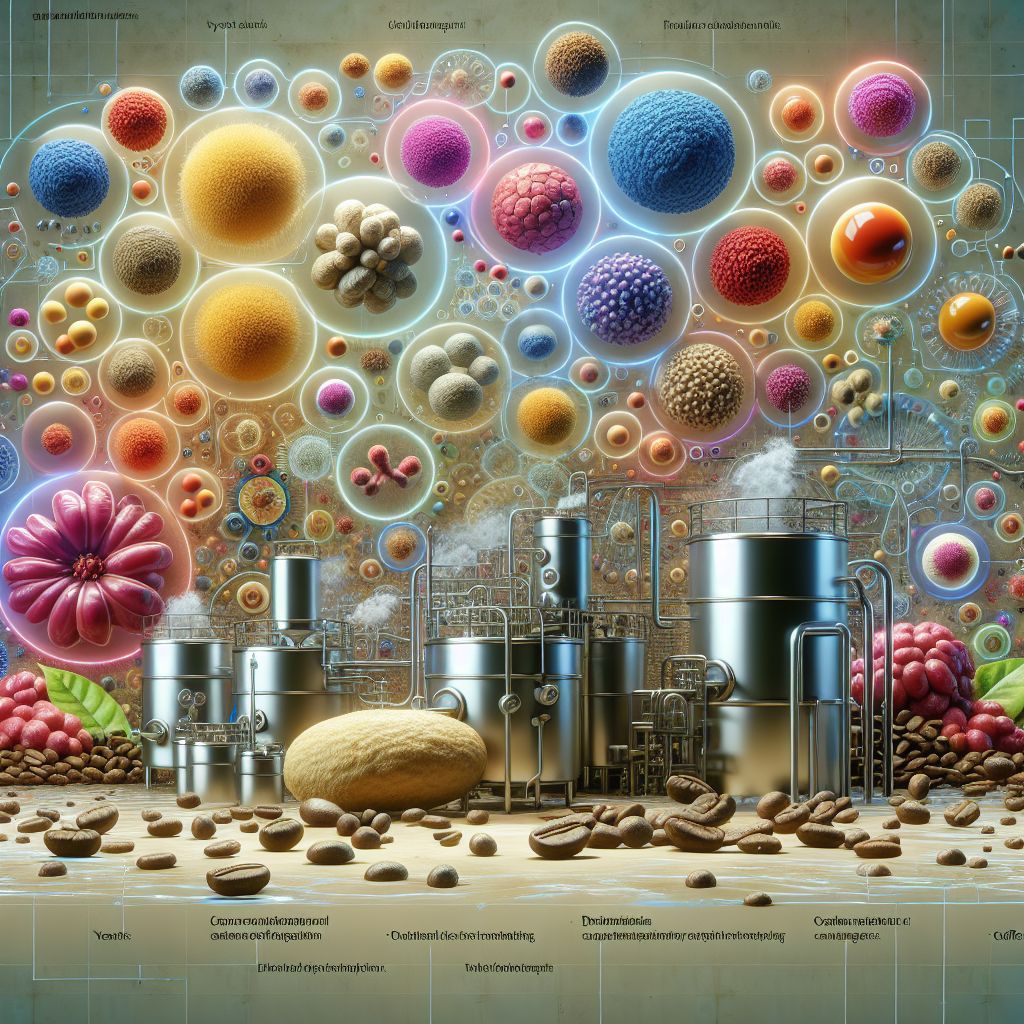Exploring Natural Yeasts in Wet Processed Coffee Fermentation
The process of coffee fermentation is an intricate dance between science and art, significantly impacting the final flavor profile of the coffee. Among the key players in this process, natural yeasts stand out, with Saccharomyces cerevisiae var being the predominant species. This article delves into the role of natural yeasts in wet processed coffee, uncovering how they contribute to the quality, consistency, and unique flavors of the final cup.
Benefits of Yeast Processing in Coffee Fermentation
Yeast processing in coffee fermentation is not just about converting sugars into alcohols; it’s about enhancing the coffee’s overall quality and unlocking unique flavor characteristics. Through controlled fermentation, coffee producers can achieve a consistent and high-quality product that stands out in the global market. The yeast’s involvement goes beyond basic fermentation; it aids in developing a complex and desirable cup profile that caters to the palates of coffee aficionados worldwide.
Types of Coffee Processing and Controlled Fermentation
Controlled fermentation is at the heart of coffee processing, irrespective of the method—be it washed, natural, wet-hulled, or honey-processed. Especially in wet processing, the role of yeast is pivotal, driving the fermentation process forward and ensuring that the sugars within the coffee cherry are broken down efficiently. This process is crucial for flavor development, highlighting the importance of selecting the right yeast strains for the desired outcome.
Anaerobic Fermentation in Coffee Processing
Anaerobic fermentation, a process characterized by the absence of oxygen, has gained popularity for its ability to produce coffee with sweeter and more complex flavor profiles. This method emphasizes the impact of yeast and bacterial activity under tightly controlled conditions, leading to a distinctive and sought-after cup quality that differentiates it from traditional aerobic fermentation methods.
Role of Yeasts and Bacteria in Coffee Fermentation
During the fermentation process, natural yeasts and bacteria play a critical role in breaking down the sugars within the coffee cherry, influencing the coffee’s final flavor profile. The intricate balance and interaction between these microorganisms are vital for creating a product that reflects the unique characteristics of its origin, providing a sensory experience that is both complex and rewarding.
Utilizing Mulberries in Yeast Fermentation for Coffee
Interestingly, mulberries can be employed to cultivate yeast for coffee fermentation. This innovative approach not only exemplifies the versatility of natural ingredients in enhancing fermentation but also opens up new avenues for flavor development. Using mulberries to create yeast introduces unique characteristics into the coffee, showcasing the potential for natural resources in crafting exceptional coffees.
Fermentation in Natural Coffees
Natural coffees experience a unique fermentation process, where the coffee beans ferment within the cherry for up to 30 days. This extended fermentation period allows for the development of profound flavor nuances, distinguishing natural coffees from their washed or honey-processed counterparts. The result is a coffee that offers a unique tasting experience, deeply influenced by the conditions and duration of its fermentation.
Wet Fermentation and Common Yeasts Used
- S. cerevisiae var is the predominant yeast species used in wet fermentation
- Natural yeasts and bacteria aid in sugar breakdown during wet fermentation
- Wet fermentation process in coffee involves the use of commonly used yeasts
Comparison with Brewing Yeasts
When comparing the yeasts used in coffee fermentation to those in brewing, S. cerevisiae for ales and S. pastorianus for lagers showcase the diversity of yeast applications. Each yeast strain brings a distinct flavor and fermentation characteristic to the beverage it ferments, underscoring the adaptability and importance of yeast selection in both industries.
Impact of Lactic Acid Bacteria in Coffee Fermentation
Lactic Acid Bacteria (LAB) plays a significant role alongside yeast in coffee fermentation, affecting the final flavor profile of the coffee. LAB’s influence through the production of lactic acid and other compounds contributes to the complexity and acidity of the coffee, highlighting the importance of microbial balance and interaction in the fermentation process.
Understanding the role of natural yeasts and their counterparts in the fermentation process offers valuable insights into coffee production. As the coffee industry continues to evolve, the exploration of new fermentation techniques and the utilization of diverse yeast strains will undoubtedly contribute to the development of unique and distinct coffee flavors. For more insights and answers to common coffee questions, feel free to browse our content here.
Shop at Breville now!
https://breville.oie8.net/oqDqrE
Shop Coffee Machine at Amazon now!
Click here!





